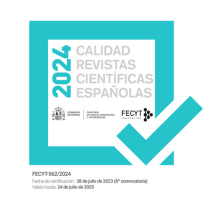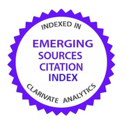Classification of climate-related insurance claims using gradient boosting
DOI:
https://doi.org/10.26360/2022_6Keywords:
cimate-related insurance claims, ensemble learning, decision trees, boostingAbstract
The aim of this paper is to implement, one of the most representative supervised learning approaches, the decision tree based ensemble method called gradient boosting for classifying the number of claims caused by storms in Greece using data from a major insurance company operating in Greece. Finally, a machine learning algorithm is used to for categorising the number of claims which have been occurred by a “storm event” into 3 categories: “no claims”, “1 claim”, “2 or more claims”.
Downloads
References
Ahmed, O., & Serra, T. (2015). Economic analysis of the introduction of agricultural revenue insurance contracts in Spain using statistical copulas. Agricultural Economics, 46(1), 69-79.
Breiman, L. (1996). Stacked regressions. Machine learning, 24(1), 49-64.
Breiman, L., Friedman, J., Olshen, R., & Stone, C. (1984). Classification and regression trees. Wadsworth & Brooks/Cole Advanced Books & Software.
Charbuty, B., & Abdulazeez, A. (2021). Classification based on decision tree algorithm for machine learning. Journal of Applied Science and Technology Trends, 2(01), 20-28.
Choudhury, A., Jones, J., Okine, A., & Choudhury, R. (2016). Drought- triggered index insurance using cluster analysis of rainfall affected by climate change. Journal of Insurance Issues, 169-186.
Clemen, R. (1989). Combining forecasts: A review and annotated bibliography. International journal of forecasting, 5(4),559-583.
Daron, J. D., & Stainforth, D. A. (2014). Assessing pricing assumptions for weather index insurance in a changing climate. Climate Risk Management, 1, 76-91.
Dietterich, T., et al. (2002). Ensemble learning. The handbook of brain theory and neural networks, 2(1), 110-125. European Environment Agency (2022). What is CORINE land cover? https://www.eea.europa.eu/help/faq/what-iscorine-land-cover
Freund, Y., Schapire, R., & Abe, N. (1999). A short introduction to boosting. Journal-Japanese Society for Artificial Intelligence, 14(771-780), 1612.
Friedman, J. H. (2001). Greedy function approximation: a gradient boosting machine. Annals of Statistics, 1189-1232.
Friedman, J. H., Hastie, T., & Tibshirani, R. (2001). The elements of statistical learning. Springer series in statistics.
Hyafil, L., & Rivest, R. (1976). Constructing optimal binary decision trees is NP-complete. Inf. Process. Lett., 5(1), 15-17.
Ke, G., Meng, Q., Finley, T., Wang, T., Chen, W., Ma, W., Ye, Q., & Liu, T. (2017). Lightgbm: A highly efficient gradient boosting decision tree. Advances in Neural Information Processing Systems, 30, 3146-3154.
Knighton, J., Buchanan, B., Guzman, C., Elliott, R., White, E., & Rahm, B. (2020). Predicting flood insurance claims with hydrologic and socioeconomic demographics via machine learning: Exploring the roles of topography, minority populations, and political dissimilarity. Journal of Environmental Management, 272, 111051.
Leblois, A., & Quirion, P. (2013). Agricultural insurances based on meteorological indices: realizations, methods and research challenges. Meteorological Applications, 20(1), 1-9.
Lyubchich, V., Newlands, N., Ghahari, A., Mahdi, T., & Gel, Y. (2019). Insurance risk assessment in the face of climate change: Integrating data science and statistics. Wiley Interdisciplinary Reviews: Computational Statistics, 11(4), e1462.
Mobley, W., Sebastian, A., Blessing, R., Highfield, W., Stearns, L., & Brody, S. (2021). Quantification of continuous flood hazard using random forest classification and flood insurance claims at large spatial scales: a pilot study in Southeast Texas. Natural Hazards and Earth System Sciences, 21(2), 807-822.
Odening M., & Shen, Z. (2014). Challenges of insuring weather risk in agriculture. Agricultural Finance Review, 74(2), 188-199.
Perrone, M. (1993). Improving regression estimation: Averaging methods for variance reduction with extensions to general convex measure optimization [PhD thesis]. Physics Department, Brown University, Providence, RI.
Rohrbeck, C., Eastoe, E., Frigessi, A., & Tawn, J. (2018). Extreme value modelling of water-related insurance claims. The Annals of Applied Statistics, 12(1), 246-282.
Tack, J., & Ubilava, D. (2015). Climate and agricultural risk: measuring the effect of enso on uscrop insurance. Agricultural Economics, 46(2), 245-257.
Tesselaar, M., Wouter Botzen, W.J., & Aerts, J. (2020). Impacts of climate change and remote natural catastrophes on EU flood insurance markets: An analysis of soft and hard reinsurance markets for flood coverage. Atmosphere, 11(2), 146.
Wolpert, D. (1992). Stacked generalization. Neural networks, 5(2), 241-259.
Yang, Q., Shen X., Yang, F., Anagnostou, E., He, K., Mo, C., Seyyedi,H., Kettner, A. & Zhang, Q. (2022). Predicting flood property insurance claims over conus, fusing big earth observation data. Bulletin of the American Meteorological Society, 103(3), E791-E809.
Downloads
Published
How to Cite
Issue
Section
License
Copyright (c) 2023 George Tzougas, Viet Dang, Asif John, Stathis Kroustalis, Debashish Dey, Konstantin Kutzkov

This work is licensed under a Creative Commons Attribution-NonCommercial-NoDerivatives 4.0 International License.


















